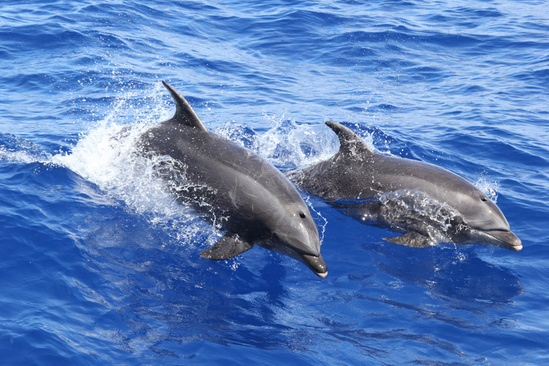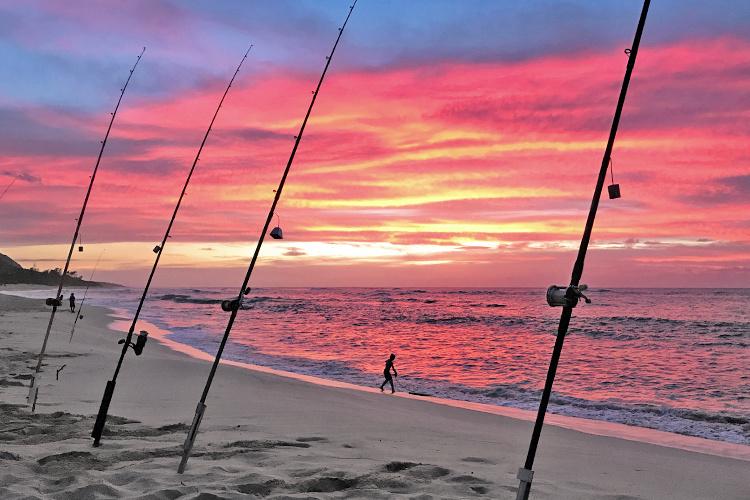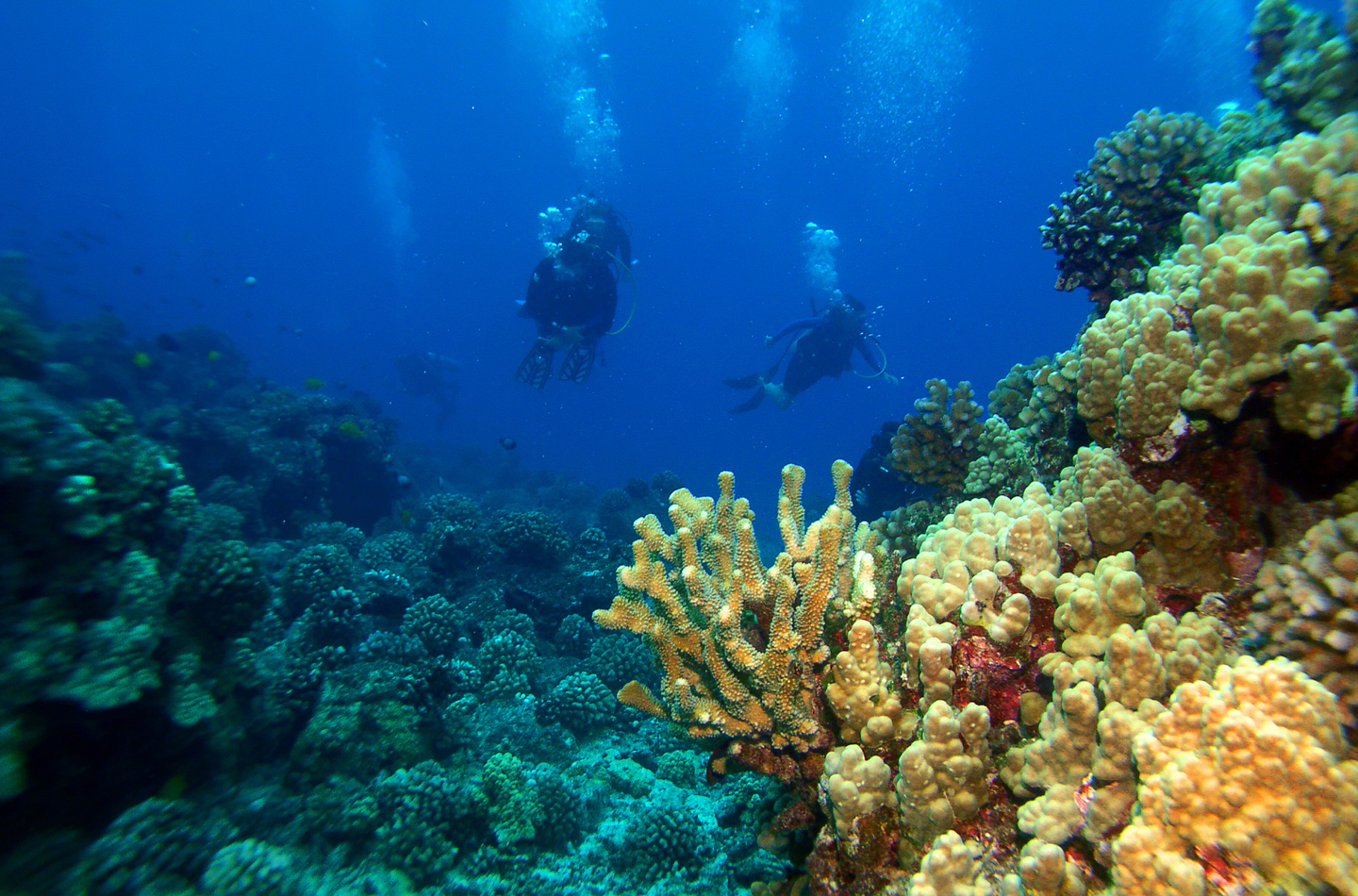
MARINE MAMMALS
From the legislative history of the MMPA: Recent history indicates that man's impact upon marine mammals has ranged from what might be termed malign neglect to virtual genocide. These animals, including whales, porpoises, seals, sea otters, polar bears, manatees and others, have only rarely benefited from our interest; they have been shot, blown up, clubbed to death, run down by boats, poisoned, and exposed to a multitude of other indignities, all in the interests of profit or recreation, with little or no consideration of the potential impact of these activities on the animal populations involved.
Then
The term “marine mammals” broadly defines numerous and diverse species of mammals that live entirely or partially in marine or aquatic environments. Cetaceans (whales, dolphins, and porpoises) and sirenians (manatees and dugongs) spend their entire lives in water and come to the surface mostly to breathe, whereas pinnipeds (seals, sea lions, and walrus), sea otters, and polar bears spend time hauled out on land to rest, care for young, or avoid predators. Throughout the ages, humans hunted marine mammals for their meat, blubber, bones, or fur, and several species were driven to extinction such as Atlantic gray whales, Caribbean monk seals, and Steller’s sea cow. Other species such as North Atlantic right whales, Pacific gray whales, Hawaiian monk seals, sea otters, and West Indian manatees were driven to the brink of extinction but thankfully survived after the enactment of international treaties and wildlife conservation laws, such as the Marine Mammal Protection Act of 1972 (MMPA) and Endangered Species Act of 1973 (ESA).
Now
Almost fifty years have passed since the MMPA and ESA were enacted, and the status of several marine mammal species has improved. Some populations of large whales are finally recovering after centuries of Yankee and Industrial whaling, such as Eastern Pacific gray whales and several populations of humpback whales that have rebounded and are no longer considered endangered or threatened under the ESA. While many pinniped species also have successfully rebounded from overexploitation, several marine mammals are still struggling. North Atlantic right whales, for example, remain critically endangered, and sea ice loss in the Arctic is creating challenges for species like the polar bear and Pacific walrus. NOAA, the Fish and Wildlife Service, the Marine Mammal Commission, and an extensive network of government and nongovernmental partners, have developed conservation and research programs under the MMPA, ESA, and other environmental laws to protect marine mammals and help their populations thrive. Marine Protected Areas, such as our National Marine Sanctuaries and National Estuarine Research Reserve System, also help protect marine mammals in our coastal communities of the Atlantic, Gulf of Mexico, and Pacific. Marine mammals have historically been very difficult to study at sea since they spend most (if not all) of their time out of sight, but today we know more than ever before about them thanks to great technological advancements that allow us to monitor them at the surface as well as at depth. Marine mammals can teach us a lot about ocean health and climate change, so the more we know about them, the better we can recover and protect them and the habitats we share.
Next
The future of marine mammal conservation -- and the conservation of their marine habitats -- depend on the choices humans make. Many species of marine mammals face threats caused by people, such as: entanglement in fishing gear or marine debris, vessel strikes, human-produced noise in the ocean, pollution, and habitat degradation. Additional long-term population monitoring efforts aided by new technologies such as autonomous underwater and aerial vehicles and sail drones, will allow us to assess human impacts and ecosystem changes and reduce or respond to them more effectively and efficiently. Great challenges lie ahead in the warming and rising seas of climate change and the demands of a growing world population, and we still have much work ahead of us to ensure that marine mammals have a bright future.

COAST
From the legislative history of the CZMA: Man's attraction to the nation’s ocean and coasts has a long history. Coastal community growth was alarming during the 1950's and 1960's, but there was no legal or administrative mechanism to direct or regulate this development. Coastal Zone Management was an idea born from the need to provide regulation of development of these land-sea interface areas.
Then
With the end of World War II in 1945, Americans turned their attention to raising families and enjoying the expanding leisure time available to the burgeoning middle class. Many chose to spend their vacations along the nation’s 95,000 miles of coast. A report for the National Park Service completed in 1955 issued a warning to the country: “Almost every attractive seashore area on our Atlantic and Gulf coasts has been preempted for commercial or private development. Only a fraction of our long seacoast is left for public use, and much of this small portion is rapidly disappearing before our eyes.”
In 1972, there was intense pressure to develop the nation’s shores for a plethora of potentially conflicting uses, including industrial, residential, recreational, and tourism, amid fears that without some kind of legal framework, the nation’s wild beaches and the public’s ability to access the seashore would be lost. But Congress took action and passed the Coastal Zone Management Act to preserve, protect, develop, enhance, and restore the country’s coastal resources.
Now
Fifty years after the passage of the Coastal Zone Management Act, nearly all the coastal states and most of the nation’s coastlines are managed under a federal and state partnership that balances the development, preservation, and use of beaches and coastal habitats.
That’s important, as coastal communities are home to nearly half the American population, support 58.3 million jobs, and contribute $9.5 trillion to the U.S. economy.
With this legislation, the nation has preserved public access to beaches and coastal waters, allowing Americans to pursue popular outdoor pastimes including fishing (50 million participants), bird and wildlife watching (33 million), canoeing and kayaking (26 million), surfing and other board sports (7 million), and other recreational pursuits.
In addition to providing recreational options, natural infrastructure provides other benefits as well. Coral reefs, seagrass beds, kelp forests, shellfish beds, wetlands, and rocky intertidal zones promote good water quality, reduce damage from strong waves and flooding, and mitigate flooding risks. That’s why NOAA continues to deliver the tools and training our state and local partners need to build coastal resilience. The challenges in the coming years are great, thanks to expanding populations and intensified threats as a result of global warming. But NOAA continues to be confident we can meet these challenges as a result of the partnerships, protections, and expertise developed over the last fifty years.
Next
While it is impossible to predict the future, the goal of the Coastal Zone Management Act is to protect our coast so that our coastal communities continue to be diverse, thriving, and exciting places to live, work, and play! We must continue to mitigate the worst impacts of climate change, and prepare for rapid and sometimes severe change. We continue to invest in natural infrastructure, such as rolling dunes and sea grasses, coral reefs, wetlands, and other approaches in communities that mimic natural infrastructure, such as grassy swales that collect stormwater. We investigate progessive alternatives, such as wind and wave energy-generation, and desalination plants. We keep our beaches healthy and open to the public. While we still partake of traditional recreational pursuits--we always love paddling--new sports have caught our attention: hello jet-surfing, drone-fishing, and aqua-caching! A strong conservation ethic runs through all of American society, which will serve us well as we continue to address our environmental challenges.

UNDERWATER PARKS
From the Stratton Commission's Panel on Management and Development of the Coastal Zone: The establishment of marine wilderness preserves has generated considerable attention and controversy. Similar recommendations, such as contained in proposed legislation of the 90th Congress, are variously termed marine “preserves” and marine “sanctuaries.” Apparent interests in these measures range from scientific research through preservation of the environment to exclude certain users for the benefit of others...We recommend that the broad National studies and inventory now being conducted by the Department of the Interior includes the identification of such sanctuaries. In general State jurisdiction of any proposed sanctuary is favored; the Federal Government should have jurisdiction only in cases outside State waters or for the protection of unique National interests.
Then
In 1966, the National Park Service celebrated its 50th anniversary and enjoyed a surge of popularity. Since then, many visitors have and are enjoying the new national seashores and lakeshores that are having a moment, many of them designated after the Stratton Commission in 1969 urged that special attention be paid to supporting public access to and developing infrastructure for water-based recreation. Though many national parks and national wildlife refuges encompass some coastal areas, and a few states have already created underwater parks independent of a land component, the federal government lacks a comprehensive authority and mandate for underwater parks. But the recognition of the conservation value of the ocean and Great Lakes, at the end of a recent spate of environmental disasters including unregulated ocean dumping, a major oil spill, and a river catching fire, is now forefront in the minds of American scientists and leaders and they know they must take action. By October, two laws are passed that lay the foundation for two new systems of parks: the National Estuarine Research Reserve System, created by the Coastal Zone Management Act, and the National Marine Sanctuary System, created by Title III of the Marine Protection, Research, and Sanctuaries Act (now known as the National Marine Sanctuaries Act).
Now
The nation has made significant strides in its creation and management of coastal and underwater parks. Estuarine systems in 22 states and Puerto Rico are protected by 29 National Estuarine Research Reserves managed through federal/state partnerships: that’s 1.3 million acres of important freshwater-meets-saltwater habitat protected for stewardship, research, education, and enjoyment. The 15 sites of the National Marine Sanctuary System protect more than 620,000 square miles of valuable marine and Great Lake ecosystems and resources; by area, it’s the largest park system in the country. More than a thousand other underwater parks--from tiny to gargantuan, from tropical to arctic, from single resource-focused to ecosystem-based--round out the nation’s expansive network of underwater parks managed by local, tribal, state, and federal agencies. The National Marine Protected Area Center, established in 2000, serves as a coordinator, advisor, trainer, and technical expert for that network. But still not enough is protected if we want a healthy, sustainable, and sustaining ocean in our future. As we seek solutions to the great environmental challenges ahead of us, the President’s initiative Conserving and Restoring America the Beautiful offers us a path forward: a goal of conserving at least 30 percent of our waters--and lands--by 2030.
Next
As a nation that includes one of the world’s largest offshore exclusive economic zones, our underwater parks now exceed our land parks by both number and area, an array of vibrant protected areas that together support the full prosperity of our nation. Wildlife and habitats thrive inside and outside of protected areas, and our local, regional, and national economies are robust because of them. Partners work across jurisdictional lines in ecosystem-based cooperative management to ensure the thriving of both our blue economy and our blue ecology and to address the challenges of a rapidly changing climate. More Americans than ever visit their parks, both in person and virtually, and support them as a critical part of our national identity.


